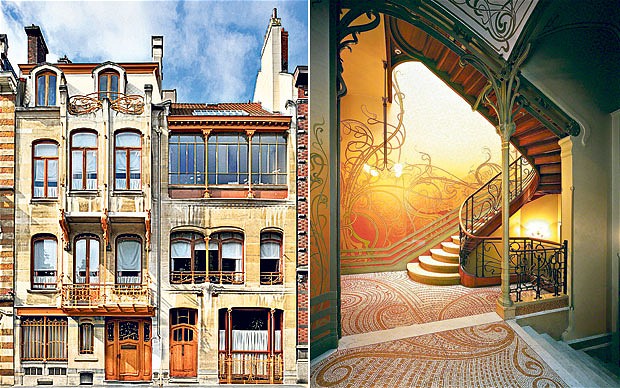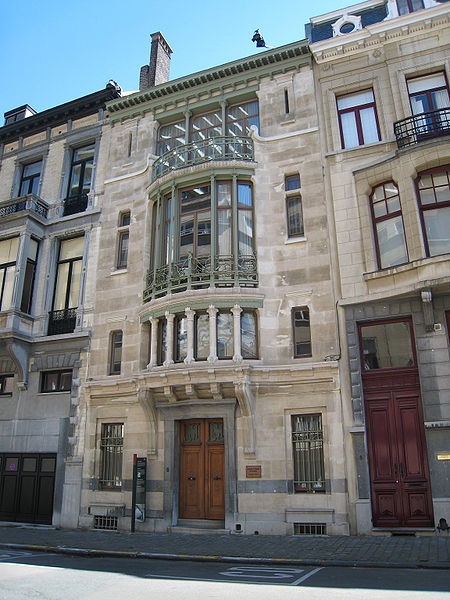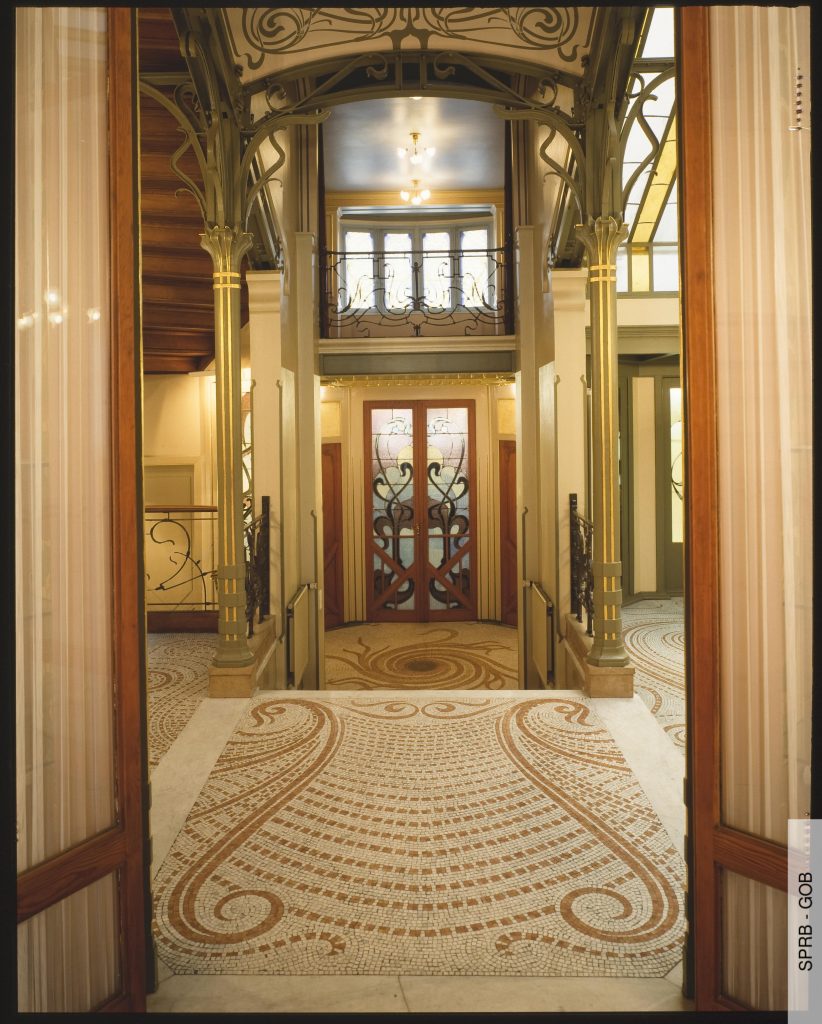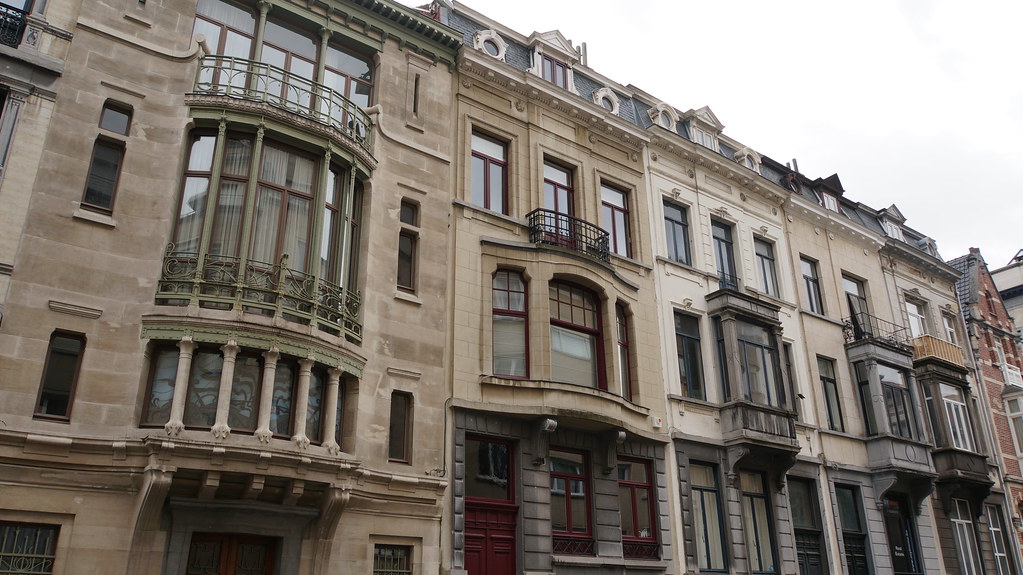
A task assigned by a friend
The Emile Tassel House was an architectural job assigned to Victor Horta by his great friend, Emile Tassel. The house would become Tassel’s mansion and part of Horta’s series of townhouses. The other townhouses included the architect’s own mansion and studio as well as the Solvay mansion and the Van Eetvelde mansion with extension. These four mansions revived the traditional idea of the Bourgeois private houses: they combine residential and representational functions. Overall, they demonstrate the individual personalities of the owners while maintaining a cohesive style that treats architecture as a whole. This was the genius behind Victor Horta’s work.

Behind the elegance of the Art Nouveau aesthetic
Horta’s stylistic choices made the houses distinctive compared to any others made during that time. These changes mainly came from the fusion of new materials that represented an entirely new look. The exterior of the structure was made to be fluid and smooth. Horta also decided to produce the columns that dominate the front portion out of iron instead of stone. This housed a bay window allowing his goal of creating a lightness to the building to become a reality. Further, Horta created unity through his continuous use of large brackets around the doors and windows. He also made a merger of nature and industry by putting the organic acanthus iron beams on the window displays. Lastly, the interior of the mansions combined stain glass windows, mosaics, wall paintings, and wrought iron that drew inspiration from Japanese art and plants. The rooms were built around a central hall which was an innovative move in this period.

A pioneer in the history of architecture
These mansions, particularly the Tassel mansion, are said to be the first prime example of the Art Nouveau architecture movement due to its inventive plan and groundbreaking use of materials. They are the first perfectly designed Art Nouveau buildings in Belgium. The Emile Tassel House would mark the start of the aesthetics of Horta’s later townhouses. Although they were truly a unique style that was admired by many, they were only affordable to the haute-bourgeoisie which is why it never caught onto other architects. The other Art Nouveau structures in different European countries would draw inspiration from Horta’s “whiplash” style which applied to traditional buildings. However, the Tassel house impacted the Art Nouveau architect, Hector Guimard, who took on this style and put his own personal twist on it. All in all, Horta became iconic for his organic elements in his architectural designs.

Sources
https://insideartnouveau.eu/en/edifices/the-tassel-mansion/
https://en.wikipedia.org/wiki/Hôtel_Tassel
https://whc.unesco.org/en/list/1005/
https://insideartnouveau.eu/en/edifices/the-tassel-mansion/
https://www.berkshirefinearts.com/04-07-2011_victor-horta-s-art-nouveau.htm
https://theplacesihavebeen.com/site_whs/major-town-houses-of-the-architect-victor-horta-brussels/
